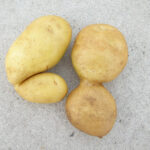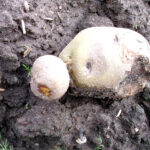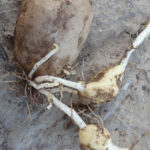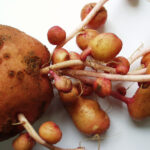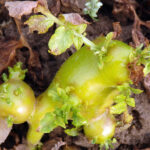Polish name: Wtórny wzrost
English name: Secondary growth
Perpetrators of the disease:
- Abiotic factors (high temperature, drought, uneven distribution of precipitation)
Gallery
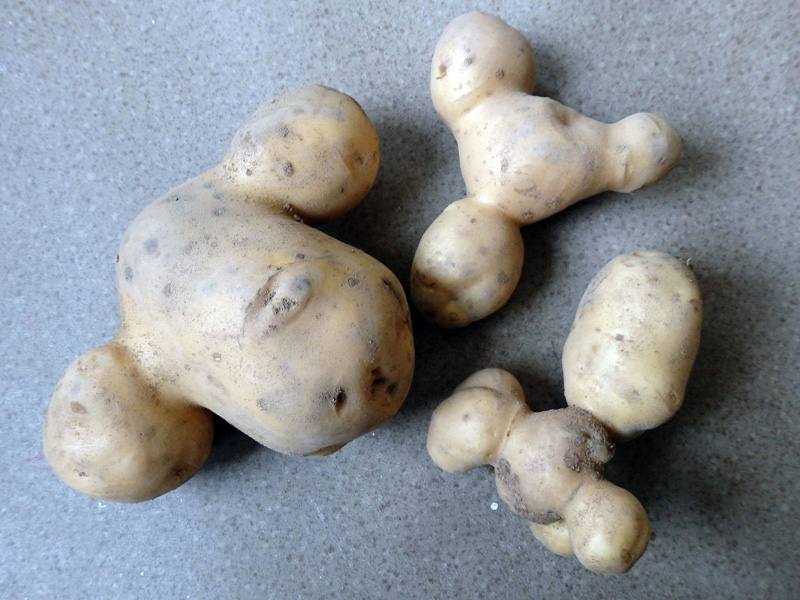
Secondary growth. Various symptoms of secondary growth.
(Photo by J. Osowski)
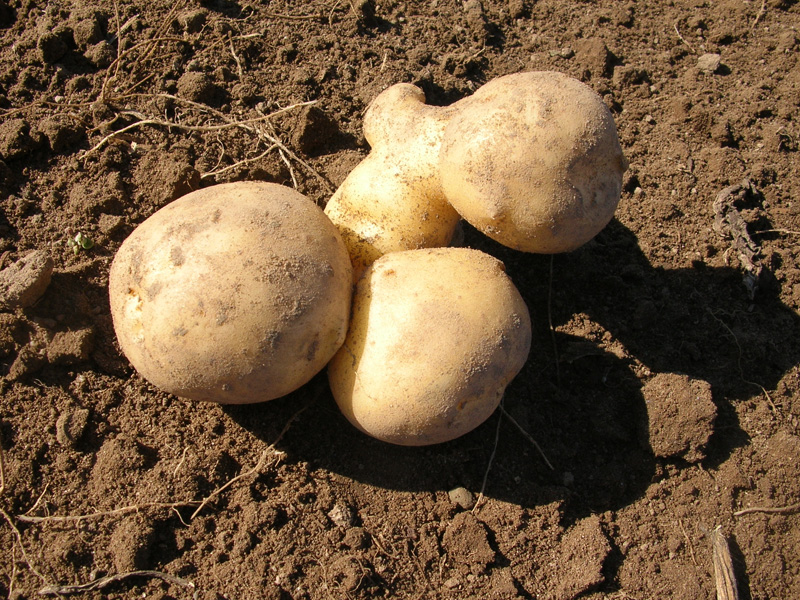
Secondary growth. Various symptoms on the tuber.
(Photo by S. Wróbel)
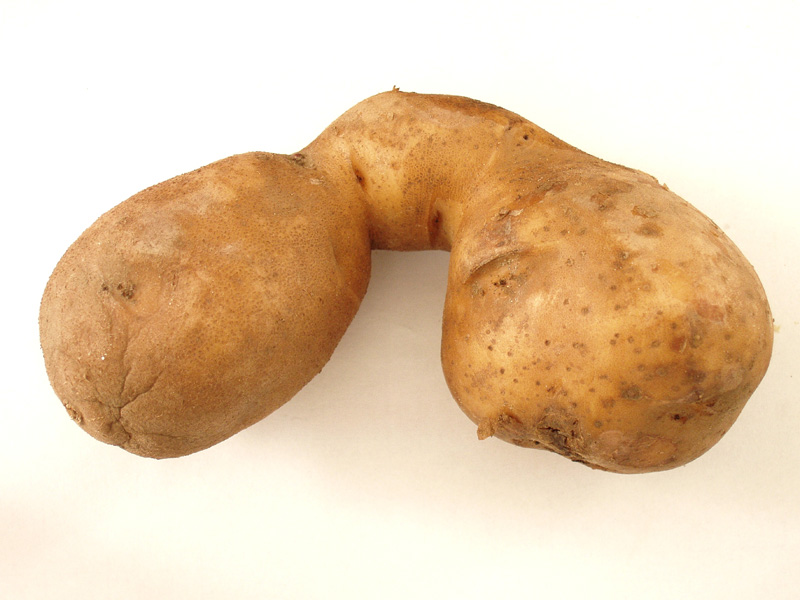
Pythium. Leakage of liquid after squeezing the tuber.
(Photo by S. Wróbel)
- Wtórny wzrost. Bulwa przypomina wyglądem ciężarki do ręcznego ćwiczenia (fot. S. Wróbel)
- Wtórny wzrost. Porażenie „młodej” części bulwy przez zarazę ziemniaka (fot. J. Osowski)
- Wtórny wzrost. Tworzenie się bulwek na stolonie (fot. J. Osowski)
- Wtórny wzrost. Tworzenie się nowych bulwek na jednym stolonie, tzw. paciorkowatość (fot. J. Osowski)
- Wtórny wzrost. Tworzenie się pędu z młodej bulwy (fot. J. Osowski)
Characteristics and description of the disease
Prolonged periods of drought cause developing tubers to prematurely cease growth and enter a state of forced maturation. Advanced in maturation, they cannot resume growth even under the influence of abundant rainfall, leading to the growth of individual eyes, forming several types of secondary growth. In these types, tubers emerge from lateral eyes of the tuber or a new one grows at its top, often reaching the size of the mother part and resembling hand exercise weights or twins. Another type of secondary growth involves the development of one or several young tubers from individual eyes of stolons. A rarer symptom of secondary growth is the formation of a new tuber from a normal tuber, which develops a shoot and leaves.
A common occurrence is the change in the appearance of tubers, negatively affecting their commercial value and the quality of tubers intended for planting and industrial processing. The flesh tissues become transparent or glassy, a result of starch allocation, which moves to the new growth, reducing starch content in the tuber. Often, the newly formed part of the tuber has undeveloped skin, promoting infections by various pathogens (photo 6). Tubers with secondary growth are not suitable for seed material, consumption, or industrial processing. They should be removed when preparing potatoes for storage to avoid increasing the risk of infection.
Conditions unfavorable for the normal development of tubers during the growing season contribute to the occurrence of such deformations. The main factors causing this defect are high temperatures, long periods of drought, insufficient humidity levels, and, to a lesser extent, frost or hail may also contribute to secondary growth. Secondary growth is largely stimulated by high temperatures, 27°C and above, although it can occur at lower temperatures. Controlled experiments have shown that exposing tubers to a temperature of 32°C for seven days was sufficient to initiate secondary growth. Secondary growth was not initiated by providing water to the tubers.
Prevention: In regions prone to drought, cultivate varieties less susceptible to drought. If possible, irrigate during dry periods. In case of prolonged drought, harvest prematurely matured tubers promptly. Remove tubers with secondary growth before the storage period.
Compiled by: Dr. Eng. Jerzy Osowski

